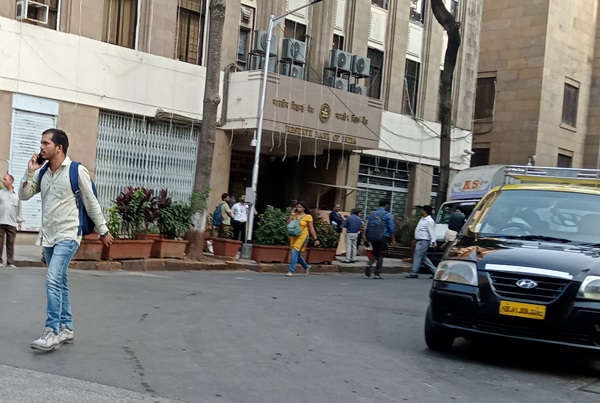.png)
RBI Rewriting FX Market Playbook Amid Global Turbulence
RBI’s silence as the rupee swings signals a strategic shift—no more one-way bets, no guaranteed defence. The playbook is being rewritten.

Richard is an independent financial journalist who tracks financial markets and macroeconomic developments
April 8, 2025 at 9:21 AM IST
In the high-stakes world of currency trading, silence from a central bank can often speak volumes. Over the past two months, as the Indian rupee swung sharply against the dollar, the Reserve Bank of India did something uncharacteristic: it stayed away. That pause, amid a global storm of rising trade tensions and tightening financial conditions, is being read as a strategic recalibration—not a lapse.
Between March 12 and 14, the rupee soared almost 2% to 85.63 a dollar from 87.23. Typically, such sharp appreciation would have triggered RBI intervention to mop up dollars and prevent overvaluation. Instead, the central bank remained absent even as exporters rushed to protect their foreign exchange earnings.
Volatility has surged since mid-January. The average annualised volatility in the dollar/rupee pair jumped from 1.4% on April 1 and January 10 to 4.2% between January 13 and April 7, then rose to 4.4% in the most recent stretch since the February 7 policy review. Between the RBI policy and the end of March, the rupee moved in a range of 2.26 rupees against the dollar—almost matching its movement for the entire calendar year 2024.
This restraint may signal a quiet transformation in how the RBI manages the rupee. It appears the central bank wants to instil a sense of two-way risk in currency trading, discouraging both bullish and bearish one-sided bets. Its absence is a wake-up call for traders who once treated RBI actions as predictable.
The RBI seems to be telling the market that speculators can no longer rely on central bank intervention as a crutch. Traders can’t build strategies on the assumption that RBI will always defend a level.
By stepping aside, the RBI may be sending its clearest message yet: the rupee is not a one-way bet.
Flexibility Amid Flux
This recalibrated approach also reflects a more treacherous global environment. A resurgence in trade tariff tensions, particularly between the US and China, is already rattling capital flows. For emerging markets like India, the stakes are high—with capital outflows, tighter global financial conditions and higher risk premia looming.
In such an environment, the RBI must preserve its flexibility. A firm rupee in the near term can act as a natural buffer against imported inflation, especially as India is heavily dependent on energy imports.
While India’s foreign exchange reserves have risen for four straight weeks, reaching $665.4 billion as of March 28, they remain below the record $704.88 billion touched in September 2024.
Publicly, the RBI’s stance has remained unchanged. In his monetary policy statement on February 7, Governor Sanjay Malhotra reiterated that the rupee is market-driven and that the RBI’s role is to ensure “orderliness and stability,” not to target any specific level or band.
Within that framework, there is room for nuance. By not reacting to every upward tick in the rupee, the RBI reinforces that it does not seek to anchor the currency artificially. Instead, it encourages a more balanced and mature market that reflects fundamentals—not just central bank action.
Market participants are taking note. Those who had built positions assuming RBI would always step in to defend the rupee are now more cautious. Volatility is no longer just a theoretical risk—it is a lived reality.
The message behind the RBI’s silence is clear: it is no longer micromanaging the rupee. Instead, it is preparing the economy and the market for a world where external conditions are fluid, capital flows are volatile, and certainty is a luxury.
Sometimes, the most potent policy is the one that is not announced.



